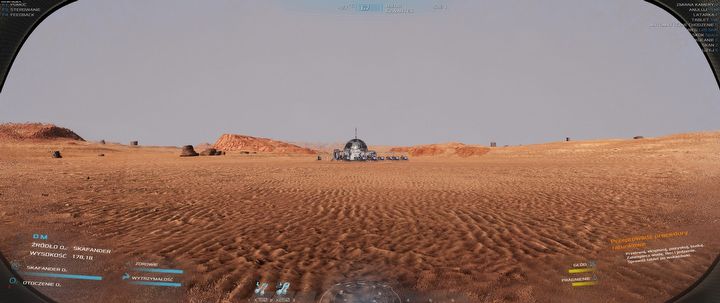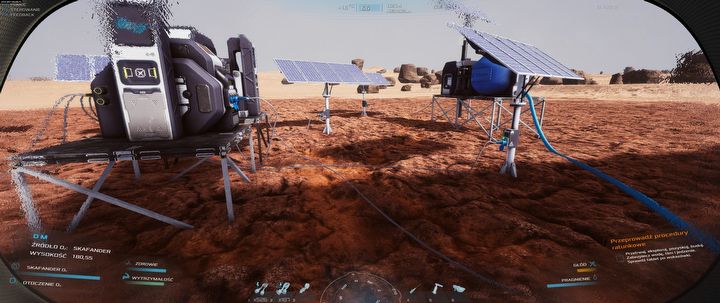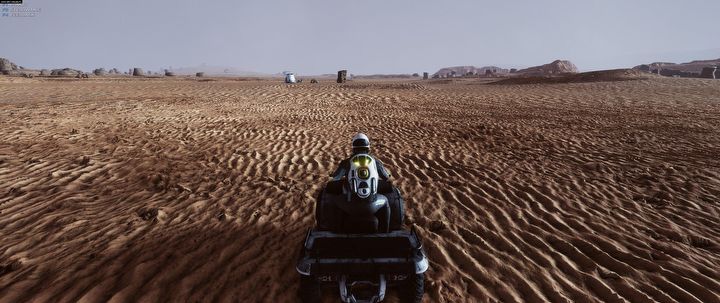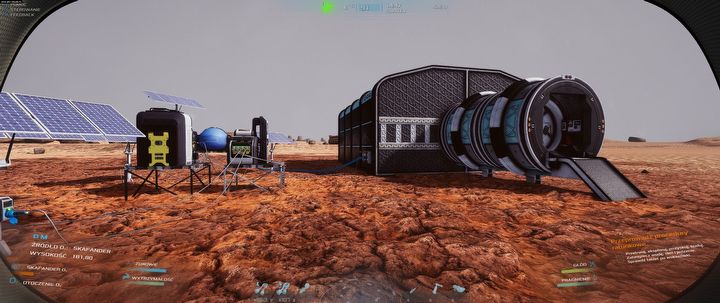Occupy Mars is Basically 'The Martian' Survival Video Game
The Polish Occupy Mars lets you feel like the main character of Ridley Scott's movie, The Martian. It is a combination of fantastic atmosphere, high immersion, realism and quite a challenge with great satisfaction from each success.
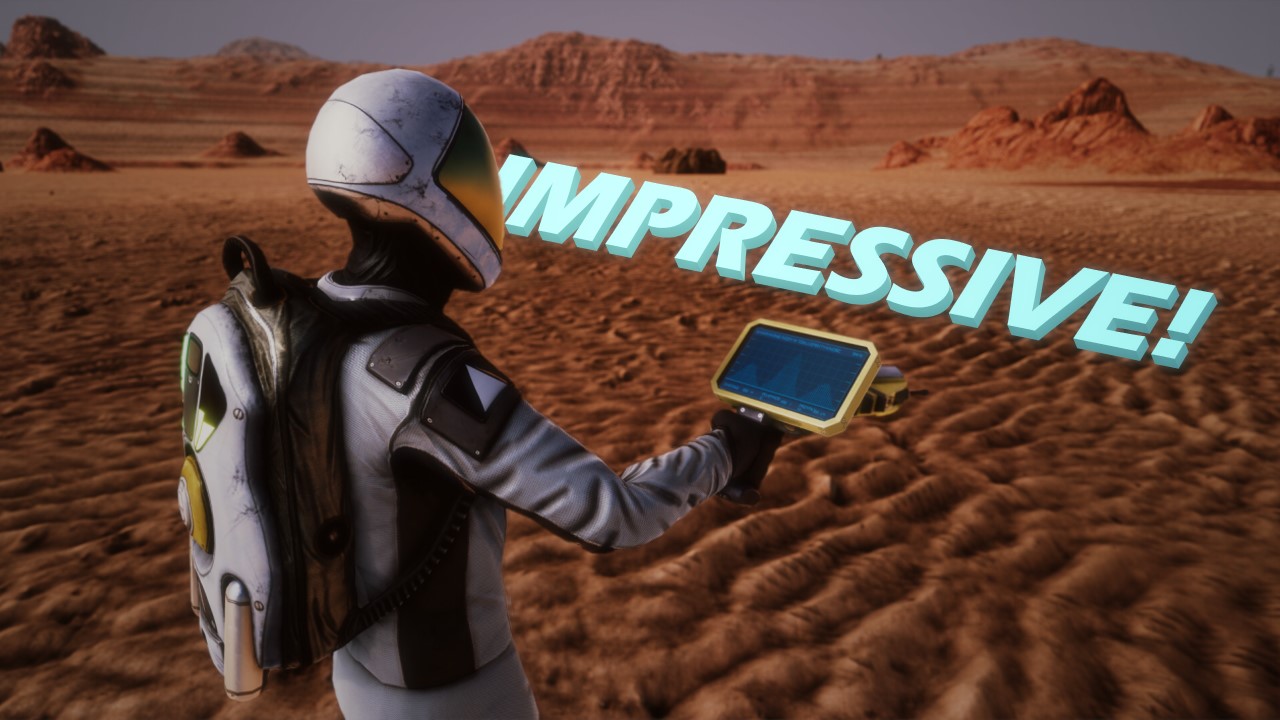
Games based on movies usually end up as a minor or major disaster. We have experienced this many times and we know that very few succeed in combining the atmosphere of the characters of the cinematic original with gameplay mechanics. But what if such a game adaptation comes about almost by accident? Without focusing on a specific film, but so strongly resembling it in every aspect that the title doesn't even seem apt?
These are the feelings I currently have after spending several hours with the Polish game Occupy Mars, which has always reminded me of Matt Damon trying to grow potatoes on the Red Planet in the movie The Martian. The developers from Pyramid Games studio, when asked about their attitude to this game, were quite reserved and pointed out similarities to another game:
(...) we tried to be original and not model too much on existing games or movies. During the 6 years of production, we purposely avoided watching related movies and playing other open worlds or sandboxes – to avoid subconsciously copying mechanics, and instead focused on inventing our own.
Interestingly, when we showed the demo for the first time after years of production, many players started comparing our game to Subnautica, although it wasn't intended. It's just a game that, similarly to Occupy Mars, is set in an environment mostly devoid of oxygen, which naturally enforces certain mechanics.
Jacek Wyszynski – Pyramid Games S.A.
Yes, it's true that survival gameplay in an environment with many limitations has a lot in common with Subnautica. But the theme, sights, locations, atmosphere, technologies, and the vocabulary – literally everything – is already taken straight out of the movie. And just like its main character – Mark Watney – from the very beginning, we spend many, many hours, a lot of tedious tasks and countless trials and mistakes on growing potatoes – a source of food when the supplies run out. And you know what? It draws you like a swamp regardless of the failures and the high degree of difficulty. It turned out that I'm able to do a lot for this potato! Occupy Mars is just a good game!
SOL 3 – my PC has better cable management
Occupy Mars evokes occupation of this planet, but the real reason the game is called that likely has more to do with the fact that the name Surviving Mars was already taken. There is only a bit of joyful colonization here, at the beginning in the form of a tutorial, but then the situation goes FUBAR quickly, and we’re to our own devices. With limited resources, forced to survive in hostile conditions, gradually building something that should eventually become our base on Mars from scratch. And what I liked most about the whole Martian survival thing were two elements: the sense of total solitude in a boundless space that one is afraid to venture out into without thorough preparation, and the high level of difficulty based on various technical details.
Of course, I could have just launched YouTube and done everything according to the numerous guides there, but this way I would deprive myself of the essence of this game. Indeed, it's difficult to describe the immense satisfaction that comes from succeeding here – when we manage to start up the found ATV, when power finally arrives in the workshop and fuels it all night, when a potato starts to resemble something edible. The satisfaction is even greater because the game merely hints what we have to get to without telling us how to do it step by step. The tutorial itself focuses on working in a fully developed base, not solitary survival with a few tools.
That's why my first attempt ended with placing buildings in completely wrong places and creating such a tangle of cables on the ground that I was grateful for lack of collision detection with them, not to mention quickly running out of them. It got better later on, but other issues arose.
SOL 5 – east or west, rescue capsule's best
The first solitary moments on Mars are not about delving into technical details, but about being tempted by the open, boundless world of the Red Planet, especially since there are two locations with ruins of former structures of some kind of facility within sight. This is our first source of scrap materials and a few necessary technologies. Trips there are quickly becoming a mandatory part of sols – or Martian days – but only because you don't need much preparation for it – just keep an eye on the hour so you don't run out of time.
After dusk, it gets too cold to survive outside the rescue capsule. You also have to constantly monitor the replenishing of water and oxygen supply in the suit. And this makes any longer expeditions require huge preparations! You should upgrade and charge the ATV's battery, prepare a supply of water, get plenty of sleep, check the forecast to see if there's a coming storm, and set off at dawn. Thanks to all these mechanics, we become strongly attached to our capsule – a refuge, even our home, to which we always need to return.
And distant expeditions are tempting not only with the evocative landscapes of the planet's surface, but above all with the exploration of extinct bases and the things we can find there in chests and on old tablets. It will take many sols before you’re ready to venture into very remote areas – planning your route accordingly beforehand, including drilling a water well somewhere along the way as well as further upgrading your ATV.
I think we did a great job of realistically recreating the surface of Mars – we procedurally generated terrain using real areas scanned by the NASA MRO satellite (thanks to the HiRISE device). We also have a fairly advanced electrical system in the game, as well as realistically recreated Martian rovers and vehicles. The game maintains gravity consistent with that on the surface of Mars (0.38G) etc.
Jacek Wyszynski – Pyramid Games S.A.
SOL 8 – PVs won't save you, knowledge might
Exploring the planet is just a small variation of the usual "cosmic routine," in which we have to grind resources from rocks and scrap, build, repair, connect and set up the entire camp infrastructure. The major advantage of Occupy Mars over Surviving Mars, in my opinion, is the first-person perspective view. This allowed us to create an extraordinary immersion and focus our attention on the smallest details. Holding down the mouse button to build something is one thing, because we then come to such small details as replacing a capacitor and soldering a path on an integrated circuit board in order to be able to use a component repaired in this way for making a much larger machine work.
We are installing solar panels to have electricity, but different devices require different power – we need to figure out how to power a workshop requiring 17 kilowatts from panels that provide 5 kilowatts while having only one plug for the electricity cable. We learn how transformers, batteries, and pumps work, how to set it all up on the panel of every construction. By the way, important side issues come up, e.g. the fact that the building must have two airlocks to prevent fainting due to pressure differences. And all this, of course, we discover by the tedious method of successive trials and errors, especially if we are not engineers by proffession.
(...) dozens of interacting mechanics make up the game. Nothing is linear and it's impossible to predict the order in which the player will develop buildings or complete tasks. A change in one object can trigger a chain reaction, so we had to be very careful. From time to time we also encountered engine limitations that had to be cleverly circumvented. We had to update it several times, which on one hand solved some problems, but on the other damaged other functionalities. All of this meant the game took a very long time to develop, so the greatest challenge was keeping the team motivated throughout this entire time and seeing it through to the launch.
Jacek Wyszynski – Pyramid Games S.A.
But I won't hide that all of this has really drawn me in. Playing virtual Matt Damon turned out to be one of the most interesting and satisfying gaming experiences of this year. Everything here is coherent, gives the impression of a realistic simulator, provides an appropriate dose of challenge and lots of joy from each, even the smallest, success.
We tried to make as many elements of the game as possible consistent with reality. Starting from Martian gravity and weather conditions to ways of obtaining water or growing food. During the production, we consulted scientific papers and NASA photos. We collaborated with the Mars Society and the HiSEAS organization, which shared with us the knowledge they’d obtained from running their own simulated Martian bases.
Thanks to our cooperation, we created a ten-episode miniseries on YouTube called Tight Beam from Mars, in which we showed the similarities between our game and real research on colonizing Mars. Of course, the biggest challenge was reconciling realism with enjoyable gameplay and balancing mechanics so that, on one hand, they posed an adequate challenge, and on the other were not boring and provided pleasure. Some compromises on this issue were necessary to achieve success.
Jacek Wyszynski – Pyramid Games S.A.
SOL 12 – all good, potatoes growing
With a functional workshop, which has direct connection to electricity and water, we return to the beginning of this story, that is, to the mentioned potato cultivation. I don't hide that several attempts ended in failure, such as having to throw out the entire stock of wilted plants into the bin. But every mistake was a lesson for the future, giving conclusions and letting me start the next attempt from a better footing. I'm currently waiting for the tuber to grow and I'm optimistic!
And stocking up on edible potatoes is just the beginning of the Martian adventure in Occupy Mars. Looking at the development tree, I see that there are still many different technologies to discover and buildings to construct, including a comfortable living container instead of a hard seat in the life capsule. In addition to this, there is also everything that the game developers are adding in the updates – the game’s still in early access, and it will continue to grow over time. Here is precisely the biggest difference between Matt Damon from The Martian and my avatar – unlike the movie astronaut, I don't want to return to Earth. I'm staying on Mars and I'm chart as much of it as I can.
